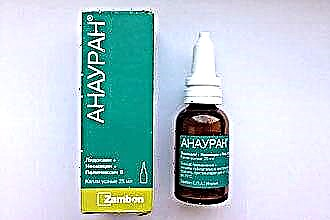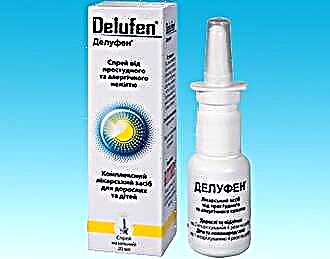Colds can develop at any time of the year - after drinking a glass of ice cold liquid in the summer heat, the next day you can wake up with a sore throat. But most often colds occur in the autumn-winter period of the year, when the piercing wind and cold air often lead to hypothermia of the body. The situation is complicated by the fact that many neglect headgear, exposing their head to the negative effects of cold. As a result, there are painful sensations in the ears. Why do ears hurt with a cold? How to treat this violation? Let's figure it out.
Causes of the disorder

What to do if ears hurt with a cold? Before answering this question, you should find out what led to the development of unpleasant sensations in the organ of hearing. Pain in the ear canal can occur with various diseases. The most common disorder is otitis media. Painful sensations can develop under the influence of pathogenic microorganisms that affect the tissues of the outer, middle or inner ear.
Very often the ear hurts with a cold. An unpleasant symptom occurs due to an untreated infectious or viral disease of the upper respiratory tract. Acute otitis media can be catarrhal and purulent. The catarrhal form of the disease is not accompanied by the formation of pustules in the ear cavity. With the development of purulent otitis media, the ear canal is filled with purulent masses, which must be removed and the ear cavity must be sanitized.
If your ears hurt with a cold, it may be caused by swelling of the Eustachian tube. In this case, after the elimination of the edema, the discomfort will also disappear.
Symptoms of pathology
Ear pain with a cold is not the only sign of a developing pathological process. The initial stage of the disease may be accompanied by itching in the outer part of the auricle. Other symptoms gradually appear:
- a feeling of ear congestion;
- hearing impairment;
- sleep disturbance due to worsening ear pain;
- increase in temperature indicators;
- persistent tinnitus;
- pain in the ear canal when swallowing;
- discharge from the ear canal of a white, greenish, yellowish, in rare cases brown liquid (this phenomenon is observed when the integrity of the tympanic membrane is disturbed, which can occur as a result of damage to the ear by infectious agents);

- irritability, headaches.
The above symptoms occur with the rapid progression of the inflammatory process. It is important to start therapeutic measures when the first symptoms of the disorder develop. This will allow you to quickly deal with the violation and avoid serious complications.
Diagnostic measures
What to do if the ear hurts with a cold? First of all, you need to make the correct diagnosis, the otolaryngologist can do this after a thorough examination.
On visual examination, a healthy eardrum has an even pinkish-gray tint. The development of the pathological process is evidenced by hyperemia of the mucous membrane of the canal and its edema.
With the help of special manipulations, the specialist will confirm or deny the presence of fluid in the ear canal - a small amount of fluid is supplied to the ear cavity, the absence of vibration of the eardrum indicates the accumulation of fluid inside the ear.
If necessary, tympanometry is performed, which makes it possible to diagnose the development of an infectious disease.
Next, let's talk about how to treat the ear for a cold.
Features of therapy
What to do with a cold ear? First of all, you need to eliminate painful sensations and stop the development of the inflammatory process.
To relieve pain and inflammation, drugs for internal use can be prescribed. Paracetamol is often used as an anesthetic; the medication is used in the following dosage:
- 1-2 tablets 4 times a day (the daily dose of the medicinal substance should be no more than 4 g) for adults and children over 12 years old;
- ½-1 tablet 4 times a day for children from 6 to 12 years old;
- 10 mg of medicinal substance per kilogram of body weight for children from 3 months to 6 years.
Paracetamol should not be used in case of impaired liver or kidney function, anemia, individual intolerance to the components of the medication, as well as during the 1st trimester of pregnancy.
 To eliminate painful sensations, drugs such as Spazgan, Maxigan, Analgin, Fenazone, Meloxicam and others can also be used.
To eliminate painful sensations, drugs such as Spazgan, Maxigan, Analgin, Fenazone, Meloxicam and others can also be used.
For the purpose of relieving inflammation, Ibuprofen is most often used. Take the drug after meals. With mild painful sensations, 1.2 mg of the drug per day is enough.
Ibuprofen is not recommended for use with a history of such diseases as gastrointestinal ulcers, visual impairment, liver or kidney dysfunction, amblyopia, individual sensitivity to the constituent elements of the drug.
To prevent further development of inflammation, Indomethacin, Piroxicam, Ketoprofen, Naproxen and other drugs can also be used.
How to treat the ear for colds in addition to these drugs? To solve this problem, topical medications are used without fail - ear drops. Such medications can have anti-inflammatory, analgesic, vasoconstrictor, and other effects. Depending on the existing symptoms, a specialist will prescribe a particular drug.
Consider the most effective drugs:
- Otinum. The medication is used for inflammation of the middle ear, as well as for acute catarrhal inflammation of the outer part of the ear canal. The main active ingredient of the drug is choline salicylate, which relieves painful sensations and stops the inflammatory process. The medicine is instilled 3-4 drops into the cavity of the sore ear 3-4 times a day.
If the integrity of the tympanic membrane is violated, the drug cannot be used.
- Otipax. The tool does not belong to antibacterial drugs, but, nevertheless, shows high efficiency in the treatment of otitis media. The medication has a pronounced anti-inflammatory and analgesic effect, and also has a detrimental effect on pathogenic microflora. The drug is instilled in 4-5 drops into the ear canal up to 3 times a day. The medicine has practically no side effects and can be used for children from birth.
- Sofradex. The drug is a broad-spectrum antibiotic, has a negative effect on pathogens, has anti-inflammatory and antihistamine properties. The drug shows high efficiency against both gram-positive and gram-negative bacteria. The agent is instilled into the ear 4 times a day, 2-3 drops. In some
 it is not recommended to use the medication in cases (for example, in case of infection of viral and fungal origin, violation of the integrity of the tympanic membrane, tuberculosis, hypersensitivity to the elements of the drug. Therefore, it is necessary to use ear drops strictly according to the doctor's prescription, taking into account all contraindications.
it is not recommended to use the medication in cases (for example, in case of infection of viral and fungal origin, violation of the integrity of the tympanic membrane, tuberculosis, hypersensitivity to the elements of the drug. Therefore, it is necessary to use ear drops strictly according to the doctor's prescription, taking into account all contraindications. - Anauran. The medicine prevents the multiplication of pathogens (both gram-positive and gram-negative). Due to the presence of lidocaine, the drug has a pronounced analgesic effect. The medicine is administered in 4-5 drops into the ear cavity 2-4 times a day.
- Tsipromed. The drug is used for the treatment of ophthalmic diseases, but also shows high efficiency in the treatment of otitis media.The tool has an effective antimicrobial effect, it is applied 5 drops 3 times a day.
All ear drops must be used always warm. The temperature of the medicinal product should be 36-37 ° C.
In order to eliminate ear pain with a cold, after consulting with your doctor, you can use proven recipes of traditional medicine. A good effect is given by warming procedures - dry and wet compresses, oil applications. But it should be borne in mind that such procedures can only be carried out with normal body temperature.


 it is not recommended to use the medication in cases (for example, in case of infection of viral and fungal origin, violation of the integrity of the tympanic membrane, tuberculosis, hypersensitivity to the elements of the drug. Therefore, it is necessary to use ear drops strictly according to the doctor's prescription, taking into account all contraindications.
it is not recommended to use the medication in cases (for example, in case of infection of viral and fungal origin, violation of the integrity of the tympanic membrane, tuberculosis, hypersensitivity to the elements of the drug. Therefore, it is necessary to use ear drops strictly according to the doctor's prescription, taking into account all contraindications.

